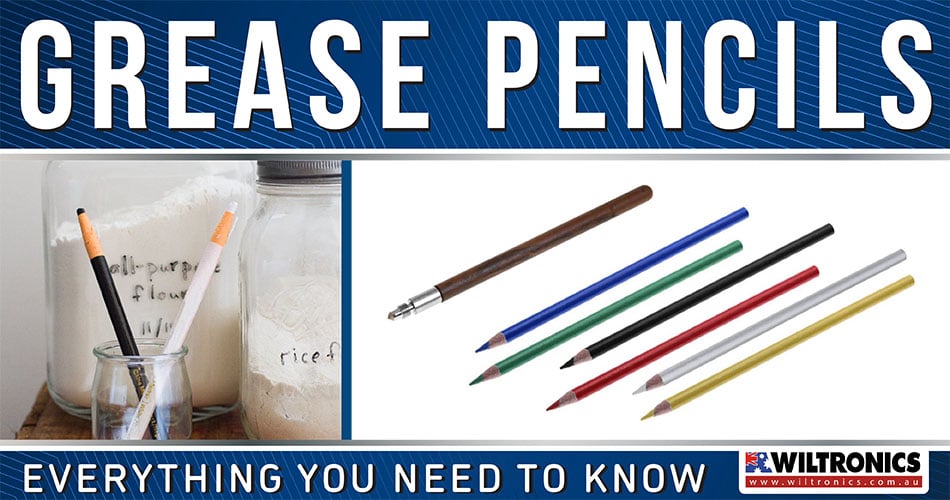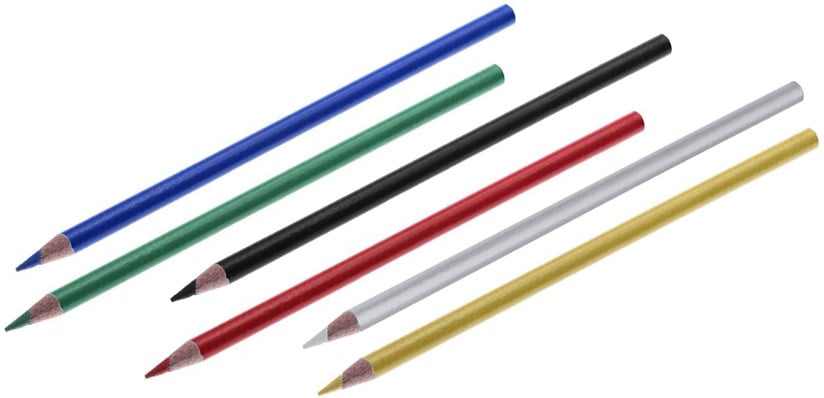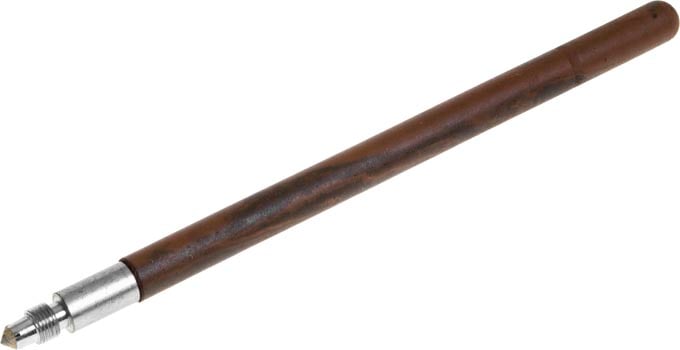Everything You Need to Know About Grease Pencils
October 19, 2022

Grease pencils look like standard pencils; you write or draw with them like one, but not on paper!
Markings in electronic DIYs or repairs can mean a few things. For one, they passed the inspection and are ready to go, or they are simply used for temporary labelling.
In most cases, you will see these marks on nonporous surfaces, such as glass, metal, stone, and ceramics. You may already know what this ‘writing tool’ is but have no idea what makes it so special for handymen or DIYers.
That is where this quick guide to grease pencils comes in.
Grease Pencils Explained
A grease pencil, sometimes called a china marker, is a writing tool made of hardened coloured wax. It is ‘writable-erasable’ even on wet surfaces, ideal use for identification and inspection.
As mentioned, it has the same look as a normal pencil—kind of like a crayon, too, but stronger. Its core is made of soft, greasy wax and used to be wrapped in paper rather than encased in wood.
A large waxy nib was surrounded by layers of paper and a string. Pull the thread to unwrap the paper and expose the core, and that is how you “sharpen” it traditionally.
Today, grease pencils are affordable and flexible marking tools suitable for various surfaces. They have some specialised uses, to boot, and are available in multiple colours.
Pulling the String
Previously, sharpening a grease pencil did not require a sharpener; pull the string, and it was ready to use. However, this method added to the fragility of the wax pencil.
Considering they were made of soft greasy cores protected by paper, they tended to break easily. If it was not done right, it could damage the pencil’s core.
Essentially, you have had to pull the string to break the outer paper seal. Then, unravel the tightly wound paper around the core as needed.
The Uses
Fade and moisture-resistant, grease pencils are specialised dry markers used in labs. Take glass instruments, for instance, such as beakers, flasks or test tubes.
They also gained the name “China marker” from marking porcelain during manufacture. They did not originate from the country but rather were used in china dinnerware.
Builders also utilise grease pencils for construction work, like lining tiles. For everything from glass to metals, e.g. brass and steel, these markers come in handy.
Moreover, they do not cause damage on the surface they are applied to and can be used to mark wet surfaces. This makes them a handy tool and common in commercial and industrial settings.
Another typical use for grease pencils is labelling a variety of media. This includes vinyl records, analogue audio tape, and photographic contact sheets. A great example is marking photo prints and negatives using a white grease pencil.
Newly Designed Grease Pencils
It all started with the classic pull-string pencils with cores wrapped in paper. Today, modern designs of grease pencils are available on the market.
1. Mechanical grease pencils
This type of grease pencil addresses the abovementioned issue of fragility. With one, you benefit from a sturdy tube that holds and dispenses the waxy cores as you need them.
Like standard mechanical pencils, it is refillable too, making them cost-effective. You can buy an empty mechanical grease pencil holder and cores separately.
These cores are also referred to as “grease pencil leads” and are available in a variety of colours. They are made from the same non-toxic wax substance that you would find in any china marker.
2. Pencil-like china markers
You will also find classic pencil-like china markers with soft cores encased in wood. Also known as uni pencils, they are more durable and can be sharpened like a regular pencil. No more pulling the string!
Unlike standard pencil crayons, the marking of grease pencils is generally more durable. With one, you can write on glassware, metal, vinyl, leather and more without permanent marks.
This grease pencil might be the one you are looking for!

Grease Pencil for Glass Writing
Product code: TL1250
Safety dictates that chemical containers should be appropriately labelled. This heat-resistant wax pencil is excellent for the job!
Ideal for laboratory use and DIY projects, mark glass with ease. Featuring a pencil-like design, it is available in black, blue, green, red, yellow and white.
Use this pencil to mark glassware when doing simultaneous experiments or DIYs. You can draw on any nonporous surface without permanently marking it.

Diamond Tip Pencil for Glass Writing
Product code: TL1210
If you are looking for a permanent solution, this diamond-tip pencil is your best bet. Excellent for marking glassware in the lab and other industrial applications.
Applications include marking microscope slides and labelling the backs of photographic slides.
The Bottom Line
Grease pencils go on smoothly and can be used on various surfaces and applications. With the convenience of modern designs, there is even more reason to invest in this reliable tool!
© Wiltronics Research Pty Ltd 2022
Write a Comment
You must be logged in to post a comment.